Osler's disease belongs to the rare vascular diseases, which particularly affect blood vessels of the skin and the mucous membrane. The diseased vessels are dilated and thin-walled. Because of this, they can tear easily, which in turn causes bleeding.
What is Osler's disease?

© toyotoyo - stock.adobe.com
Osler's disease is a vascular disease, which is characterized by malformations of the blood vessels. These malformations include short circuits between veins and arteries as well as rapidly vulnerable vascular dilation.
The first sign of this disease is usually repeated nosebleeds. If this is severe, it can cause anemia. The small and diseased blood vessels can be seen as tiny, reddish and irregularly shaped spots on the face. They often show up on the fingertips and on the mucous membrane of the nose and mouth.
With increasing age, the stains increase steadily up to the age of 50. The changes in the vessels can also affect internal organs, so that further consequences are possible. The vascular disease Osler's disease can also cause bloody tears, blood in the urine, tar-like stools, heart failure and a stroke.
causes
Osler's disease is a hereditary disease. It develops through specific damage to a carrier of DNA. This defect is dominant and is not gender specific. This means that there is a 50% chance that a child will have Osler's disease if one parent has this vascular disease.
This genetic defect can be located on two different genes, which in turn are located on two different chromosomes. Both genes influence the inner lining of the blood vessels. In Osler's disease, they are defective, so that the smallest blood vessels are affected. They expand and become vulnerable and thin-walled.
Furthermore, short-circuit connections develop between veins and arteries. The malformations of the vessels and their inheritance are the reasons why Osler's disease is also called hereditary hemorrhagic telangiectasia.
Symptoms, ailments & signs
Osler's disease can cause very different symptoms, always depending on the severity of the disease and the location of any Osler nodules. The genetic defect manifests itself primarily through recurrent bleeding, especially nosebleeds and skin bleeding around the face. This so-called telangiectasia can lead to anemia.
Then symptoms such as tiredness and difficulty concentrating appear. This can be accompanied by iron deficiency anemia, which restricts the physical and mental performance of those affected and causes long-term damage to bones, teeth and nails. Osler's disease generally makes itself felt early in puberty or later in life.
The external signs gradually increase up to the age of 50, before they stagnate or gradually regress again. The main symptom are red to bluish-purple spots that reach a size of one to four millimeters and appear irregular.
They are mainly located on the mucous membrane of the mouth and nose as well as on the fingertips. In individual cases, internal organs and tissues are affected by the vascular dilation. If the genetic defect is based on a damaged endoglin gene, vascular damage also occurs in the lungs. A damaged ALK-1 gene manifests itself in overall milder symptoms.
Diagnosis & course
The diagnosis of Osler's disease usually takes place on the assessment of the symptoms present. Classic symptoms include frequent nosebleeds and red spots on the face and fingers.
A thorough medical history can also provide helpful clues for the diagnosis. If this hereditary vascular disease is suspected, imaging methods are also used. Endoscopy, ultrasound, and computed tomography can determine whether internal organs are impaired.
Blood samples can also be taken to confirm the diagnosis. These are examined by molecular genetics in order to prove the responsible malformations in the genome. How the disease progresses depends on the genetic defect and the impairment of the organs. Depending on the severity of Osler's disease, complications such as bleeding in the brain, strokes, abscesses and heart failure can occur.
Complications
With Osler's disease, those affected suffer from various ailments. In most cases this leads to increased bleeding. These can also appear in the skin, so that small hemorrhages can be seen under the skin. It is not uncommon for patients to suffer from nosebleeds and anemia. The anemia has a very negative effect on the patient's entire organism and can lead to tiredness and fatigue.
The resilience of those affected also decreases enormously due to Osler's disease and there is a lack of iron. Various organs can also be affected and damaged by Osler's disease. For this reason, treatment for this disease is definitely necessary. Osler's disease does not heal itself.
Osler's disease can be treated. However, the treatment is only aimed at limiting the symptoms; causal treatment is not possible. Many complaints can be limited with the help of blood transfusions or skin transplants. The life expectancy of the person affected is usually not reduced by the disease. There are also no particular complications during treatment.
When should you go to the doctor?
The time of the first visit to the doctor is usually early in the event of symptoms caused by Osler's disease. Typical symptoms manifest themselves at the latest in puberty and the clinical picture becomes recognizable. The family doctor is visited as soon as the first complaint occurs.
Children who frequently have nosebleeds for no apparent reason or who have visible vasodilatation around the nose cause their parents to be concerned. With Osler's disease, the entire body can be affected. Often times this condition is inherited in the family.
Usually an ENT doctor is consulted about frequent and long-lasting nosebleeds. The superficial Osler foci in the nose can be easily recognized by an experienced doctor. If necessary, the doctor will refer the affected child to a specialist clinic for further examinations. The involvement of other organ systems must be clarified if Osler's disease is suspected. There is a risk of internal bleeding.
Since hereditary hemorrhagic telangiectasia is hereditary, the symptoms should be clarified and treated promptly. Interdisciplinary treatment approaches are often necessary in order to develop an appropriate treatment strategy. The recommended therapy can then be monitored by the family doctor or an ENT doctor. More than symptom relief and acute treatment of bleeding is not possible with Osler's disease. Regular visits to the doctor or occasional emergency doctor visits are therefore to be expected.
Treatment & Therapy
A therapy from Osler's disease is said to relieve the symptoms of vascular disease. The cause cannot be eliminated at the moment. Which therapy options are available depends on the symptoms and the individual circumstances.
Frequent nosebleeds can be stopped by nasal packing. Furthermore, the nosebleed can be contained by obliterating the enlarged vessels with a laser. Usually this laser therapy is only of short duration. Long-term success is promised by a skin graft. The diseased nasal mucosa is replaced by skin from other parts of the body. Often skin is removed from the thigh.
But there are also gentler methods that promise help. This includes specific creams that are supposed to protect the mucous membrane from damage. Occasionally, the vascular disease also causes anemia due to the frequent bleeding. Then it is a good idea to treat the anemia with iron supplements. If the blood loss is very severe, blood transfusions are also integrated into the therapy.
If internal organs are affected and cause discomfort, the vascular connections can be closed by inserting metal spirals. If this does not work, the treatment method for Osler's disease is an operation.
Aftercare
Osler's disease is a congenital disease that, according to current knowledge, cannot be treated completely and, in particular, the cause. A variety of symptoms that correlate with dilated blood vessels are typical of the disease. For this reason, Osler's disease affects different areas and organs of the human organism.
The symptoms of the disease can partly be treated symptomatically, so that aftercare measures can be carried out for the respective treatments. However, general follow-up care for Osler's disease is not possible because the disease is incurable. The frequent nosebleeds in patients with Osler's disease can be treated with a surgical procedure, which does not completely eliminate the causes and thus the symptoms.
After the nose operation, particular attention should be paid to hygiene and infection with flu viruses should be avoided so that the operated nasal mucous membranes can heal. Some patients have increased bleeding in the gastrointestinal tract. Here, too, various treatment options come into question, for example by means of laser radiation.
As part of the aftercare after such therapy methods, those affected strictly adhere to prescribed nutrition plans so that the stomach and intestines can recover from the surgery. In general, patients with Osler's disease undergo regular check-ups by various specialists in order to monitor the condition of the vasodilatation of internal organs.
You can find your medication here
➔ Medicines for nosebleedsOutlook & forecast
Osler's disease is an incurable genetic disease. The prognosis is based on the type of illness and the respective symptoms and complaints. The symptomatic treatment reduces typical symptoms such as pain and skin changes and enables the patient to lead a relatively symptom-free life. Regular medical check-ups are used to discover and treat complications at an early stage.
The only problem is the pulmonary arterial venous malformations, which can cause life-threatening bleeding with advancing age and in pregnant women. Due to the risk of air embolism, diving with a compressed air cylinder is no longer permitted in Osler's disease if short-circuit connections in the lungs have been diagnosed.
The outlook and prognosis of Osler's disease are based on the course of the disease and the individual symptoms. A wide variety of courses are possible, from barely noticeable restrictions to severe complications. In individual cases, a liver transplant is necessary, which is associated with severe restrictions for those affected. Life expectancy with type 1 HHT is lower if the condition is left untreated or if there are short-circuit connections in the lungs and brain. Patients with type 2 HHT have a normal life expectancy when treated appropriately.
prevention
For the hereditary disease Osler's disease there are no preventive measures. If this genetic defect is present, various measures can be taken to counteract the development of complications. Those affected should avoid alcohol, nicotine, stress and heavy physical exertion or stooping. The diet should be done consciously. Lots of lettuce, little meat and avoiding acidic berries are advisable.
You can do that yourself
With Osler's disease, the focus is on comprehensive medical treatment. Depending on the severity of the disease, those affected can take a number of measures themselves to reduce the symptoms and support the healing process.
Cooling and protection can help against the typical nosebleed. Since the vessel walls are particularly sensitive, all kinds of violence should be avoided. If the bleeding leads to anemia, the doctor must be informed in any case. In mild cases, the deficiency symptoms can be reduced by changing the diet. In any case, those affected must drink plenty of water or spritzers and eat a balanced diet. Since the typical symptoms of Osler's disease usually occur during puberty, therapeutic support is advisable. Attending a self-help group can help those affected to better accept the disease.
In general, the sick require extensive support from specialists and psychologists. The relatives should watch out for unusual symptoms and call emergency services if in doubt. Support from people close to you is particularly important in the later stages of the disease. In addition, close monitoring by the doctor is always necessary.

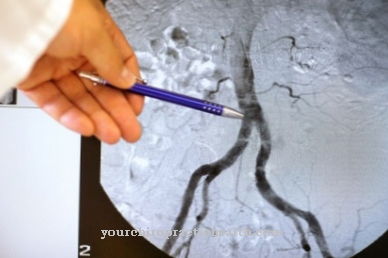
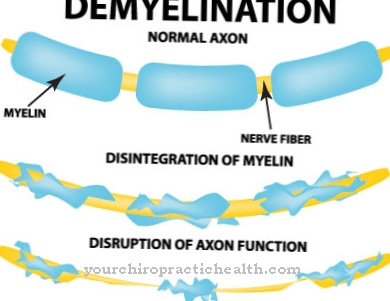
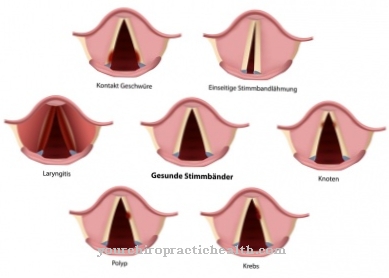
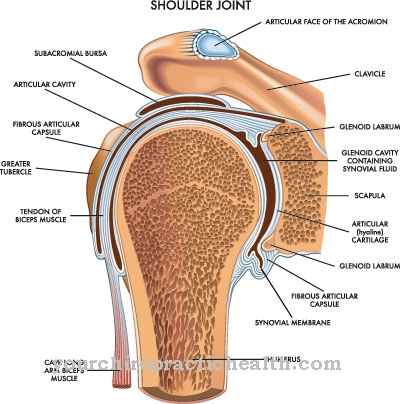
.jpg)
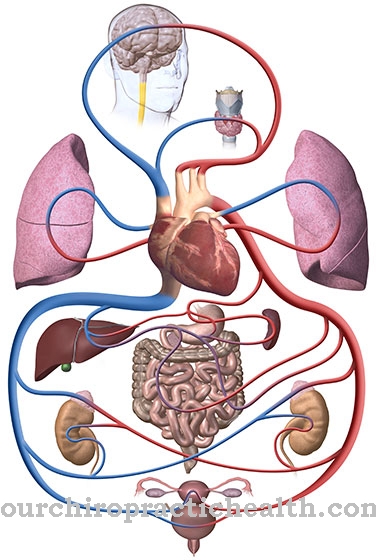

















.jpg)



